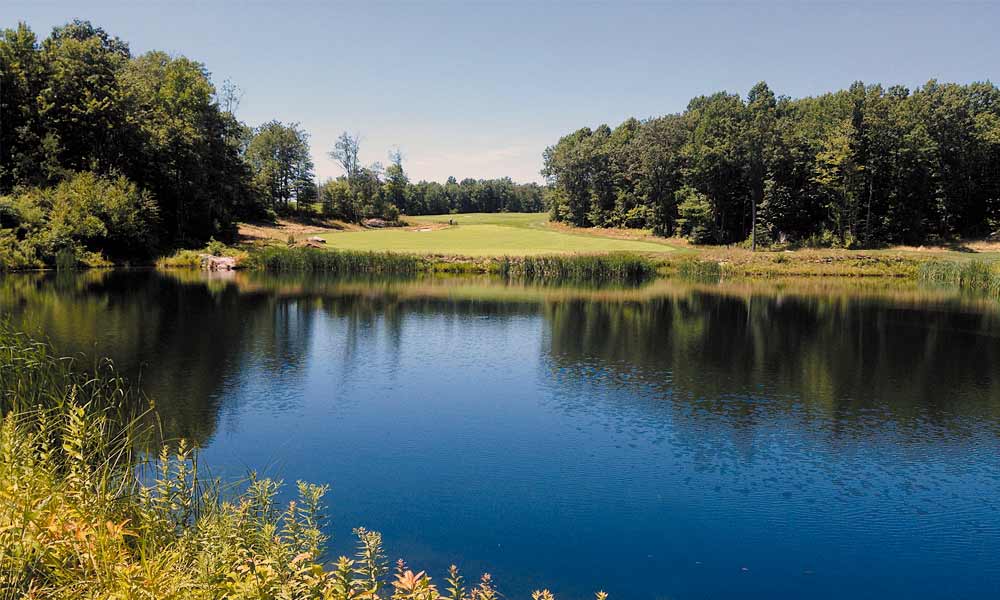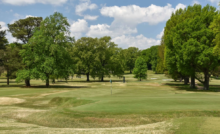Winter Is Coming – Make Sure Your Pond Is Prepared


Winter weather can wreak havoc on the spring and summer beauty and function of a golf course lake, pond or water feature. In fact, proper winterizing procedures are one of the best things you can do for a clear and healthy lake or pond next season. A few key preparatory measures help ensure the aquatic ecosystem is protected and remains in top condition for the following year.
WHEN TO START WINTERIZING
You can start your winterizing processes when the water temperature begins to approach 60 degrees. This could be late fall to early winter. However, before the water’s temperature dips below 60, you will want to clear up any visible remaining pond algae or weeds. For less regrowth in the spring, try to eliminate aquatic nuisances in the fall by removing organic debris, aerating, managing weeds, and performing routine maintenance.
Related: Superintendents Winter Time Chores
MANAGE AND ORGANIC DEBRIS
Organic debris develops during the fall and winter and its decay helps to load the system with excess nutrients and depletes the water of oxygen which causes algae, aquatic weeds, fish kills and odors. Leaves, sticks and any other floating or submerged organic material should be removed. Make sure your landscapers never blow leaves or grass clippings into the water or the storm drains, gutters, and ditches that lead to the lake or pond.
AERATE TO INCREASE OXYGEN AND WATER FLOW
There are several reasons for winter pond aeration: to increase oxygen levels to prevent winter fish kills, to keep areas of water open for winter waterfowl and other wildlife, and to prevent freezing. Most importantly, aeration will help to remediate the accumulation of organic matter and fertilizer runoff that can ultimately fuel algae growth the following spring. Depending on the pond’s depth and shape as well as one’s personal preference, a floating fountain or submersed air diffused aerator can serve to aerate a pond. Your lake and pond management professional can help you determine the ideal type, quantity and location(s) for achieving proper aeration.
PERFORM SURVEYS AND MAINTENANCE
Early winter, before the frigid weather comes, is a wonderful time to evaluate problems from the previous year and devise a mitigation plan for the upcoming year that will pay huge dividends next spring. An inexpensive pond survey can be performed using GPS technology to inspect structural components and identify areas of the basin with major sediment accumulation. A more in-depth look at your lake or pond would include a bathymetric survey, which can help determine the rate of sedimentation over time and forecast when a lake or pond might need dredging.
Lake and pond winterizing is a very important part of your role as a steward to an aquatic resource. If you customize the procedures discussed above to fit your specific situation, you will find that your spring maintenance will be significantly reduced, giving you more time to enjoy the beauty of your golf course in the coming year.
John Phelps is an experienced Environmental Scientist with SOLitude Lake Management, an environmental firm providing a full array of superior lake, pond, wetland and fisheries management services and solutions. Learn more about this topic at www.solitudelakemanagement.com/knowledge
Recent Posts
Memphis Country Club: A Golfer’s Study in Precision and Tradition
If you have ever teed it up at Memphis Country Club, you know this isn’t…
Foley Company attains GCSAA Silver Partner Status
Foley Company, a leader in turf equipment innovation and technology, affirms its support of the…
Harrell’s continues longstanding support of the GCSAA Foundation
Harrell’s LLC, a leading distributor of customized agronomic products for turfgrass since 1941, has donated…
City of Orlando Announces New State-of-the-Art Driving Range at Dubsdread Golf Course
The City of Orlando is excited to announce the construction of a brand-new, state-of-the-art driving…
Discover Puerto Rico for Great Golf Trips and After-Round Activities, Amenities
Golfers cannot live by the game alone which is why Puerto Rico provides the perfect…
Q&A with a Multi-talented Golf Course Architect – Part 2: Making the Rounds – Installment 39
This column features recollections of the author’s 37 years as a golf writer. These installments…


